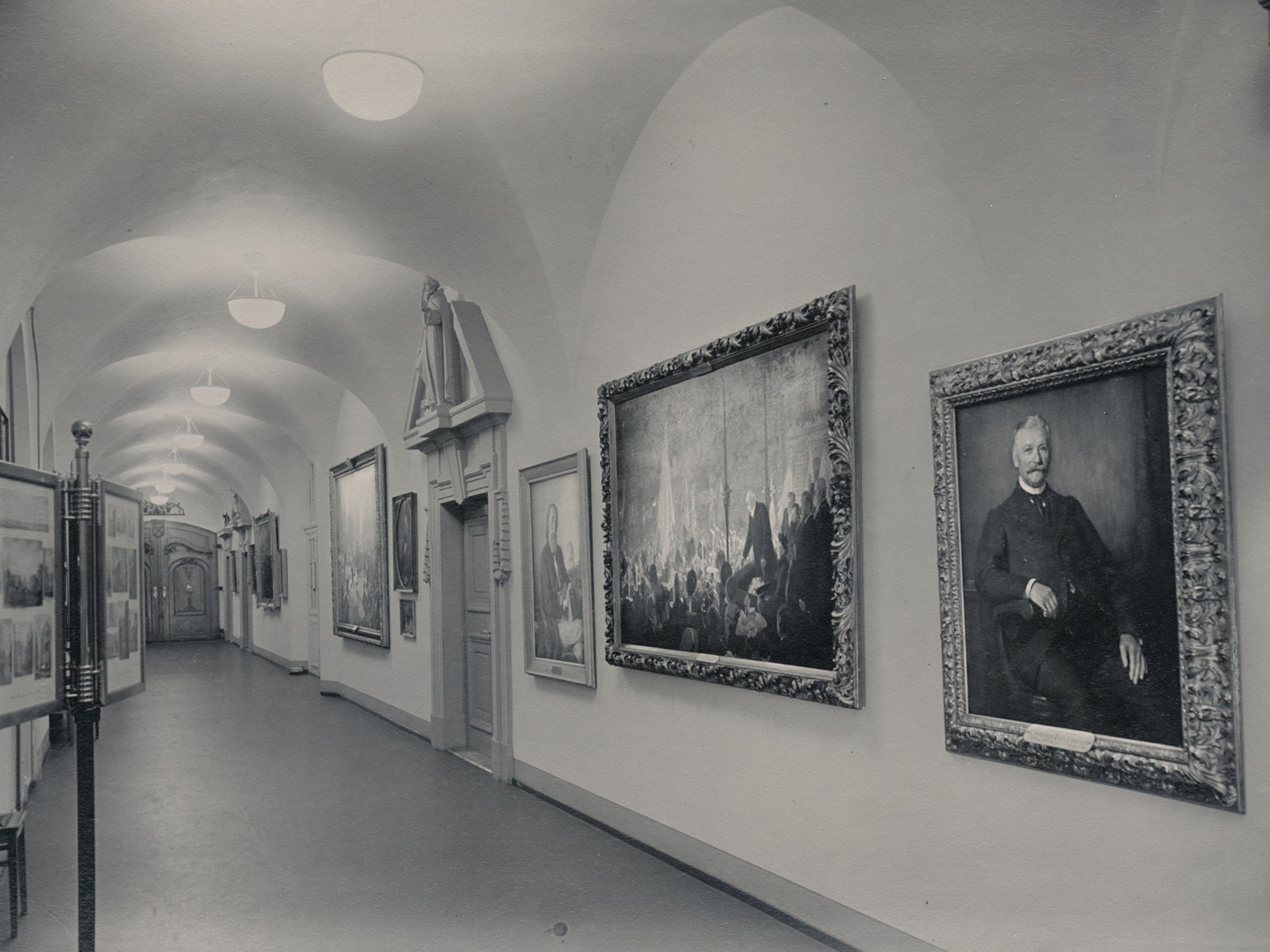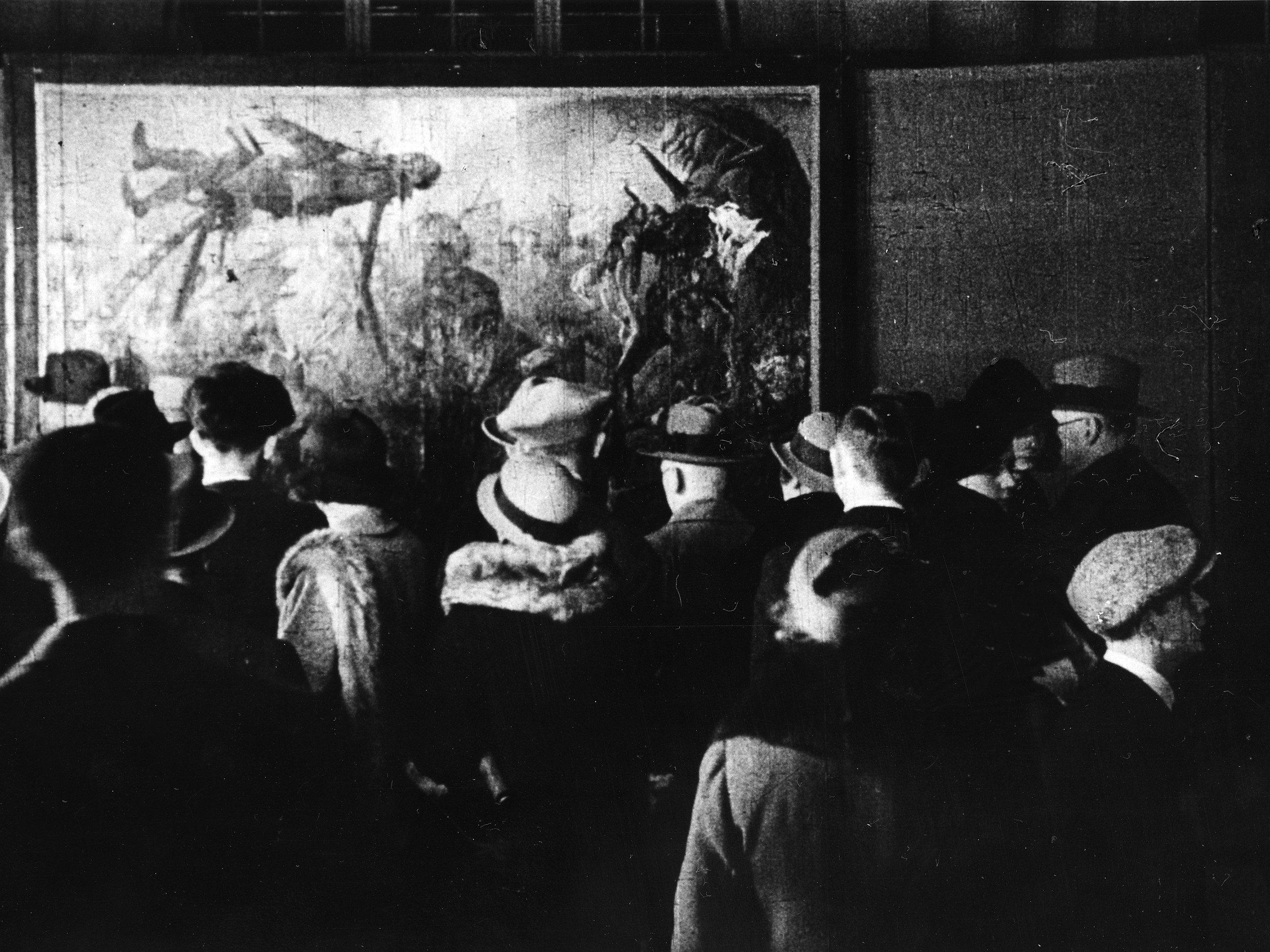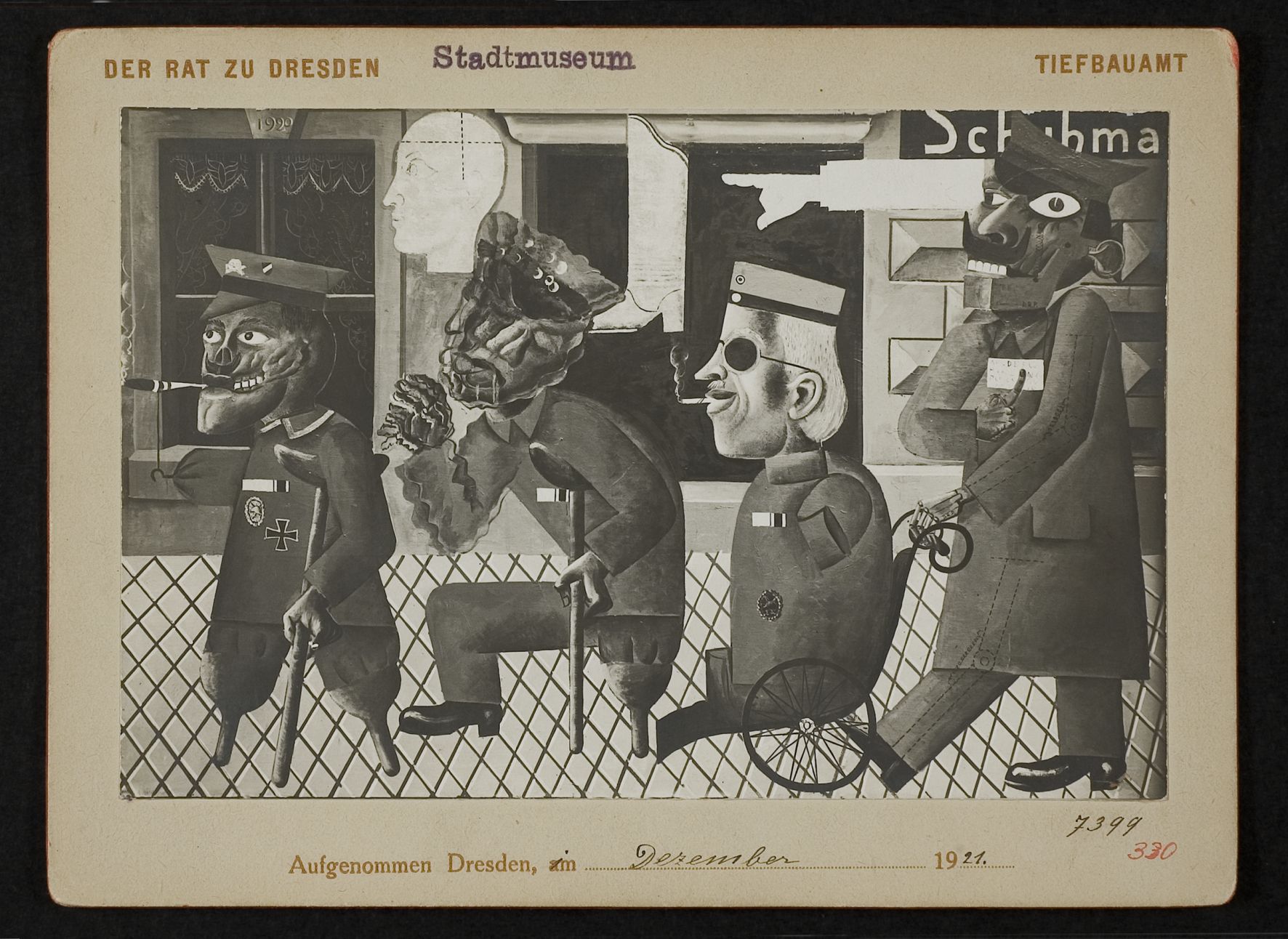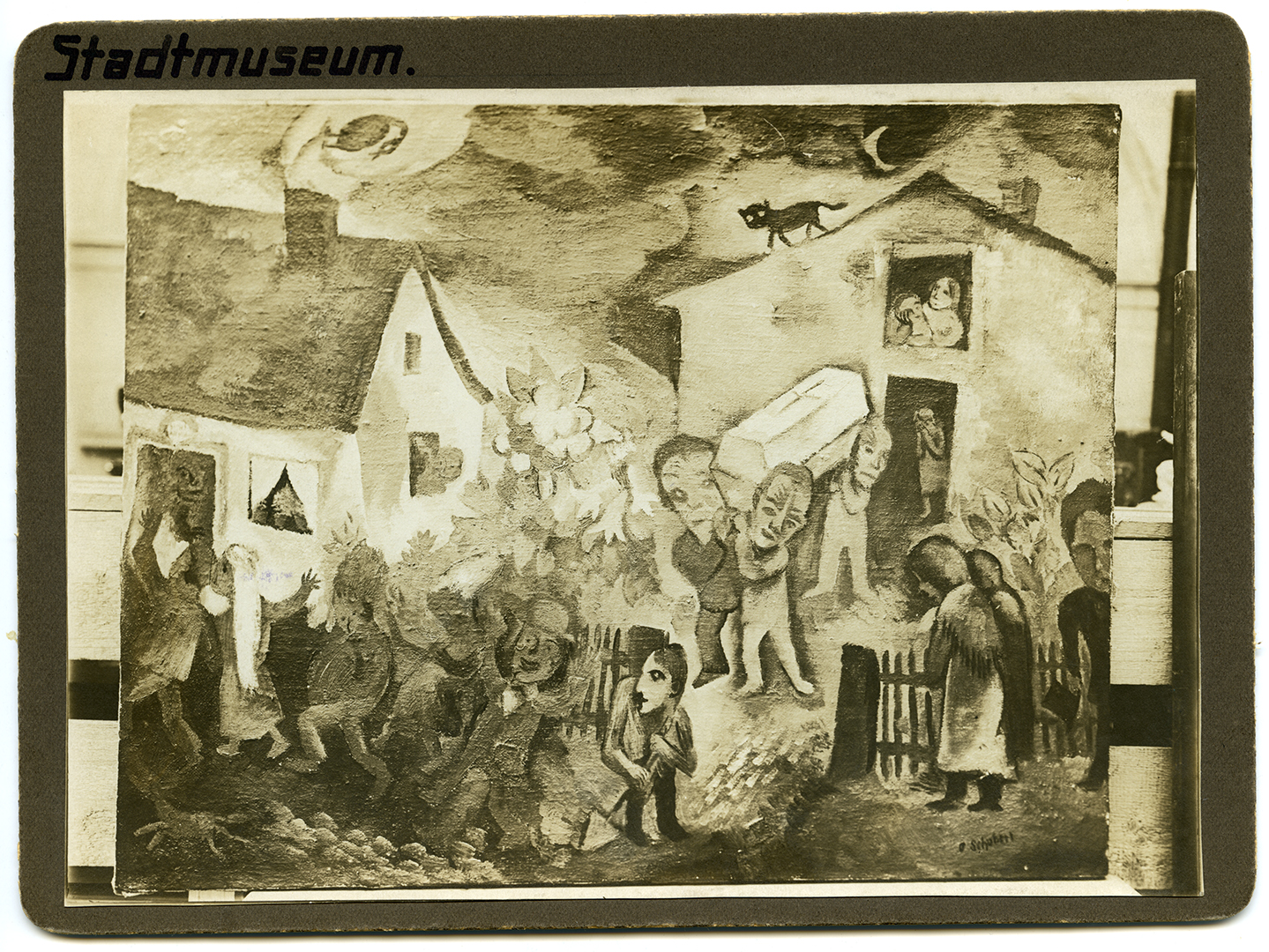The municipal art collection from its beginnings to the »Degenerate Art« campaign
The history of the art collection began with the Association for the History and Topography of Dresden and its Surroundings, founded in 1869. Its members had collected artefacts of bourgeois city culture and a few paintings. One focus was on portraits of important personalities, as well as views of the city and landscapes of the surrounding area. The art historian Paul Ferdinand Schmidt, who was Director of the Municipal Collections from 1919 to 1923, began to reorganise the art collection. Under his leadership, the Dresden City Museum was transformed into the Dresden Municipal Collections. Schmidt focussed on collecting contemporary art. He bought works by Erich Heckel, Ernst Ludwig Kirchner, Otto Dix, Oskar Kokoschka, Lasar Segall and Kurt Schwitters, among others, and thus built up a high-calibre collection of German Expressionist art. During the "Degenerate Art" campaign, the National Socialists confiscated 498 individual works from the municipal art collection. The majority of these art treasures are still considered lost today, and only a few works later found their way into important national and international museums. Further important works of art were lost during the war and in the immediate post-war period.


After the Second World War, the municipal art collection was integrated into the Institute and Museum of the History of the City of Dresden, which was renamed the Dresden City Museum in 1990 and was primarily dedicated to researching the city's history. In 2000, the Dresden City Council decided to establish a municipal art museum. At the same time, a support association was established, which celebrated the founding of the Städtische Galerie Dresden on 1 June 2002. The Städtische Galerie took over the art collection from the administration of the Dresden City Museum and was able to open its exhibition rooms on the first floor of the Landhaus on 2 July 2005. Since then, the art museum of the Saxon state capital has been dedicated to the history and present of art from Dresden and the region, as well as developments and trends in contemporary art.
Provenance research at the Städtische Galerie
In accordance with the principles laid down in the Washington Declaration of 1998 (with the aim of identifying artworks confiscated under National Socialism), the provenance of the Städtische Galerie Dresden's collection holdings will be systematically researched.
A whole series of artworks expropriated during the GDR era were already returned to their rightful owners in the 1990s on the basis of corresponding applications.
Since 2007, we have been working on reconstructing our inventories, which were lost in 1945, by researching archive files, removal lists and notes on the artworks themselves. With the support of the Provenance Research Centre at the Institute for Museum Research of the National Museums in Berlin - Prussian Cultural Heritage Foundation, we compiled this data from 2009 to August 2010 and systematically researched the provenance of all the works in our collection acquired up to 1945. Information was gathered on a total of 4865 art objects (659 paintings, 2093 hand drawings and watercolours, 1966 reproductions of graphic works and 147 sculptural objects). In addition, information on the provenance of 1095 works lost during the Second World War (457 paintings, 855 drawings and watercolours, 548 prints, 61 sculptural objects) was found. On this basis, search reports were entered into the lostart database.
It is planned to clarify further provenances of pre-war acquisitions as well as purchases and allocations of artworks after 1945 in a follow-up project. According to the inventories, between 1945 and 1969 alone, around 1,700 works created before 1940 were not acquired directly from the artists or from their estates. Some of these were purchases from private collections, others were allocations from state bodies.

Recommended Reading
- Johannes Schmidt: Künstler, Kunst und Kunsterwerb. Die städtische Kunstsammlung in den Jahren 1924 bis 1933. In: Dresdner Geschichtsbuch. Hrsg. vom Stadtmuseum Dresden. Altenburg 2007, Bd. 12, S. 181–202.
- Johannes Schmidt: »Deutsche« statt moderner Kunst. Kunst in Dresden und die städtische Kunstsammlung in den Jahren 1933 bis 1935. In: Dresdner Geschichtsbuch. Hrsg. vom Stadtmuseum Dresden. Altenburg 2008, Bd. 13, S. 191–218.
- Johannes Schmidt: Zwischen Künstlerförderung, Auftragskunst und Stadtdokumentation. Die städtische Kunstsammlung nach 1945. In: Dresdner Geschichtsbuch. Hrsg. vom Stadtmuseum Dresden. Altenburg 2011, Bd. 16, S. 208–232.

























